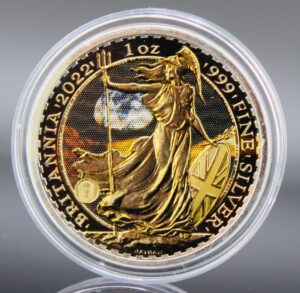Have you ever picked up a freshly minted 1OZ Gold Britannia coin or held a gleaming bar and wondered how it all began as ordinary rock? The journey from a lump of ore to a polished piece of bullion is part brute force and part precision art, with a few surprising steps in between.

It starts underground, where gold is mixed with rock in veins that miners extract using heavy machinery. Back at the processing plant, this rock—called ore—is crushed into a fine powder and washed to separate the gold particles. Chemical treatments, often involving cyanide or other compounds, dissolve the gold so it can be collected in a crude form known as doré bars. These are rough, impure slugs of gold and other metals, and they’re only the first step.
Next comes refining. Doré bars are heated in a furnace until they melt, then purified through methods like the Miller process—where chlorine gas removes impurities—or electrolysis, which yields gold of 99.99 percent purity. The molten gold is cooled and cast into ingots or poured into molds to create sheets, wires, or small pellets called casting grain. These forms of nearly pure gold are the starting point for both bars and coins.
When it comes to bars, there are two main production methods. Cast bars are made by pouring molten gold into simple molds and letting them cool. As each bar solidifies, it takes on a slightly unique texture and cooling marks, giving it an industrial, one-of-a-kind look. Minted bars use a different approach: sheets of gold are rolled out, cut into precise blanks, polished to a mirror finish, and then stamped under high pressure with the refinery’s logo, weight, and purity. The result is a sleek, uniform bar perfect for collectors and investors.
Coin production demands even greater precision. Round blanks are punched out of gold sheets and tumble-polished until they gleam. These blanks are placed in coining presses fitted with detailed dies. With a single, powerful strike, each blank transforms into a coin bearing intricate designs, dates, and inscriptions. To thwart counterfeiters, modern bullion coins often feature advanced security elements like micro-engraved text, holographic images, or textured backgrounds.
Throughout the entire process, quality control remains uncompromising. Inspectors use sensitive scales, calipers, and microscopes to check weight, dimensions, and surface detail. Anything that falls short of strict standards is melted down again and starts the cycle anew.
From the harsh world of mining to the gleaming perfection of minted bars and coins, every step is a blend of old-school craftsmanship and cutting-edge technology. The next time you hold gold in your hand, you’ll know it represents a long, fascinating journey from rock to shine.
